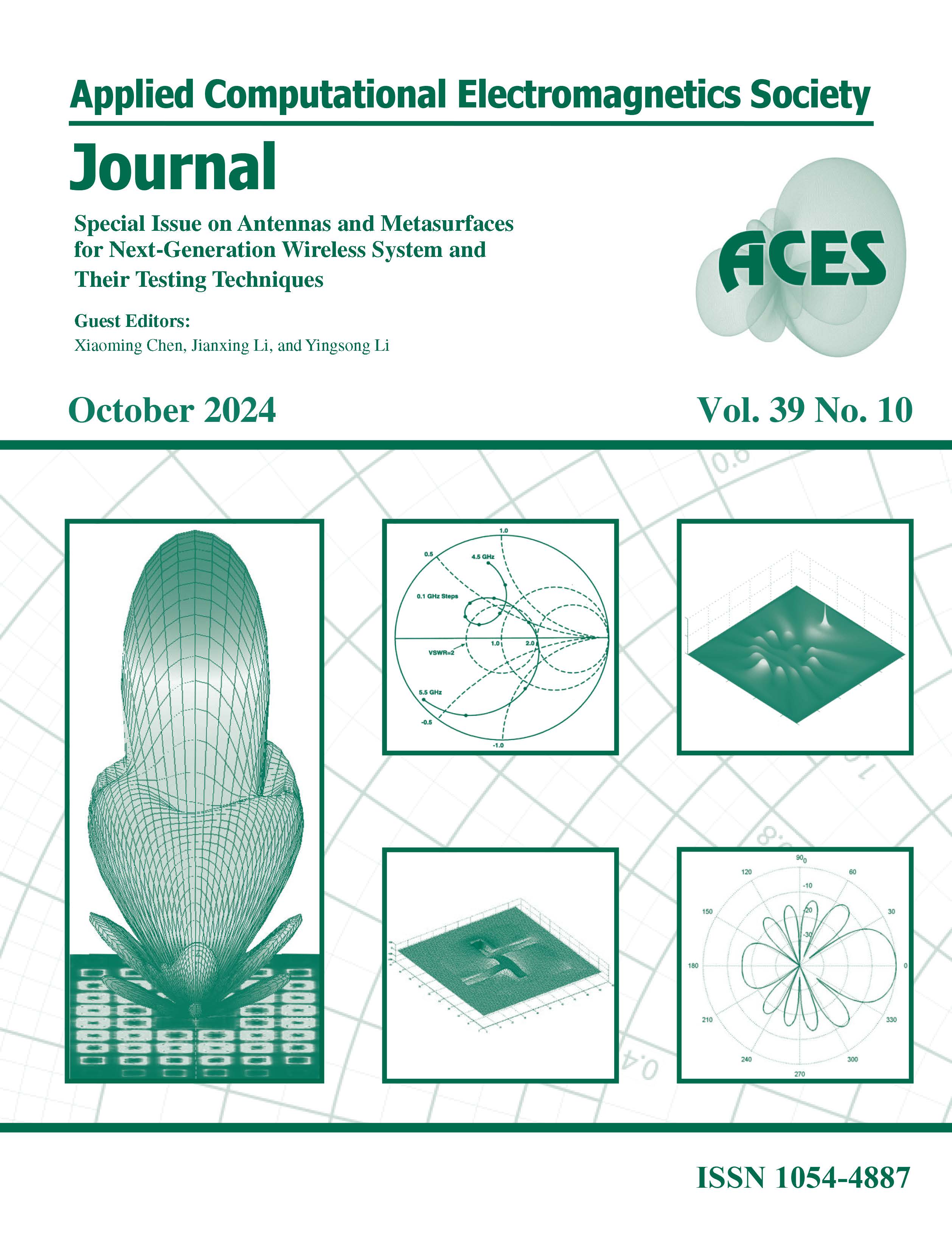Architecture and Validation of Wideband Simultaneous Transmit and Receive Phased Array System
DOI:
https://doi.org/10.13052/2024.ACES.J.391006Keywords:
Phased array, self-interference suppression, simultaneous transmit and receive, widebandsignalAbstract
Because signals of different frequencies exhibit different characteristics after channel coupling, the traditional phased array system only uses phase shifter or antenna beam control to process frames plus amplitude adjustment control, which has the problem of optimizing the parameters of different frequencies to offset the mismatch. Based on the principle of broadband adaptive beamforming, each channel is configured as an adaptive filter with multiple taps to satisfy the precise relationship between interference suppression and frequency. On this basis, combined with the simultaneous application of a multi-element array system, a multi-tap weight optimization method for interference suppression is proposed. At the same time, in order to satisfy the application requirements of the existing phased array system architecture with only one set of controllable and adjustable weights, an adaptive beamforming weight optimization method for phased array system for wideband signals is analyzed and proposed on the basis of simulation analysis and research on the electromagnetic characteristics of the coupled self-interference channel. Through electromagnetic simulation evaluation and principle test verification, a set of weights corresponding to the center frequency of the wideband signal can be used to achieve interference suppression greater than 114 dB in the active transmission domain.
Downloads
References
J. P. Doane, “Simultaneous transmit and receive with digital phased arrays,” in Proceedings of IEEE International Symposium on Phased Array Systems and Technology, pp. 1-6, 2016.
R. Chen, F. Li, J. Tang, X. Liu, J. Li, and X. Chen, “A diagnosis method for radio frequency channels of wireless devices without cable connections,” IEEE Transactions on Antennas and Propagation, Dec. 2023.
Y. Wang, H. Pei, W. Sha, Y. Huang, and A. Kishk, “MIMO performance enhancement of MIMO arrays using PCS-based near-field optimization technique,” Science China: Information Sciences, vol. 66, no. 6, June 2023.
T. Chen, M. Baraani Dastjerdi, J. Zhou, H. Krishnaswamy, and G. Zussman, “Wideband full-duplex wireless via frequency-domain equalization: Design and experimentation,” in Proc. ACM MobiCom’19, 2019.
S. B. Venkatakrishnan, E. A. Alwan, and J. L. Volakis, “Wideband RF self-interference cancellation circuit for phased array simultaneous transmit and receive systems,” IEEE Access, vol. 6, pp. 3425-3432, 2018.
K. E. Kolodziej, J. G. McMichael, and B. T. Perry, “Multitap RF canceller for in-band full-duplex wireless communications,” IEEE Transactions on Wireless Communications, vol. 15, no. 6, pp. 4321-4334, 2016.
H. L. Adaniya, “Wideband active antenna cancellation,” Master’s thesis, Massachusetts Institute of Technology, 2008.
J. Zhang and H. Wu, “Simultaneous transmit and receive phased array system architecture and prototype comprehensive verification,” Applied Computational Electromagnetics Society (ACES) Journal, vol. 37, no. 12, pp. 1257-1264, May 2023.
J. Zhang and J. Zheng, “Prototype verification of self-interference suppression for constant-amplitude full-duplex phased array with finite phase shift,” Electronics, vol. 11, no. 3, p. 295, 2022.




